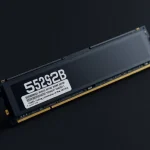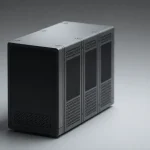CXL and Its Impact on the Evolving Memory Hierarchy

In a world where technological advancements are pivotal for progress, the evolution of memory architecture is at the forefront of innovation. With the end of Moore’s Law signaling a paradigm shift, new approaches are being adopted to enhance computing efficiency. As we delve into the emerging landscape of memory hierarchies, we uncover the role of Compute Express Link (CXL) as a transformative force connecting processing units and memory systems.
Understanding these developments not only highlights the significance of memory management but also prepares us for a future where computing capabilities are vastly improved. This article explores recent advancements in memory technology, the implications of CXL, and what the future may hold.
End of Moore’s Law: A New Era in Computing
As we reach the limits of Moore’s Law, which predicts the doubling of transistors on a microchip every two years, the traditional approach to computing is undergoing significant changes. The conventional Von Neumann architecture, characterized by a central processing unit (CPU) coupled with memory and storage, faces challenges in meeting the increasing demands for speed and efficiency.
Current data processing needs are far exceeding what mere transistor addition can achieve. To combat bottlenecks arising from CPU-memory and memory-storage interactions, computer architects are exploring innovative solutions:
- Storage-Class Memory (SCM): Innovations such as SCM are being developed to provide faster access to data.
- App-Specific Processors: Tailored processors designed for particular tasks can enhance performance.
- New Interconnects: Technologies like CXL are paving the way for faster input/output operations.
The advancement of computing systems is no longer defined solely by the number of transistors. Instead, the focus is shifting towards creating more efficient and powerful systems capable of handling the demands of artificial intelligence (AI) and machine learning applications.
Recent Developments in Memory Technology
The design of commodity servers remains straightforward, with CPUs interfacing with dynamic random-access memory (DRAM) through socket connections. However, the introduction of 3D XPoint technology aimed to address DRAM limitations but has seen a decline as companies pivot towards other promising solutions. Micron's decision to cease 3D XPoint development reflects a shift in focus:
- High Bandwidth Memory (HBM): This technology offers faster connections between CPUs and memory, reducing latency significantly.
- CXL Fabrics: These are poised to support shared memory architectures, enhancing memory access across processors.
Both Micron and SK Hynix foresee a transformational three-tier memory hierarchy, which, starting from HBM, progresses through DRAM and SCM. Notably, HBM could enhance energy efficiency by approximately 40%, presenting a compelling case for its adoption in x86 servers.
CXL: Enabling Memory Pooling and Accessibility
The Compute Express Link (CXL) represents a leap forward in memory architecture by providing an interconnect that surpasses the limitations of the PCIe bus. Its developers envision a system where different types of memory, including DRAM and SCM, can be pooled and shared between CPUs and GPUs, enhancing overall memory availability.
This innovation enables individual servers to supplement their local memory with shared resources across the CXL bus, creating a more robust memory environment. However, it is essential to note that HBM is not included within these shared pools. Roland Dreier, a senior engineer at Google, pointed out:
- Future CXL speeds may not be compatible with HBM capabilities.
- Potential for new "memory drives" utilizing standard DRAM through CXL.
Moreover, Dreier speculates about a future where CPUs utilize HBM for immediate processing needs while leveraging CXL-connected RAM for additional support. This reconfiguration of memory hierarchy promises to enhance performance without the compromises of current architectures.
Closer Integration of Processing and Memory
During a recent presentation at the IEEE International Reliability Physics Symposium, SK Hynix's CEO Seok-Hee Lee discussed emerging memory technologies that aim to bring processing even closer to memory. This includes:
- Processing Near Memory (PNM): Integrates CPU and memory into a single module for faster access.
- Processing In Memory (PIM): Combines CPU and memory in one package, offering enhanced speed.
- Computing In Memory (COM): Even faster integration, with CPU and memory on a single die.
Lee anticipates that PNM will emerge first, followed by PIM and COM, ultimately leading to neuromorphic semiconductors that mimic human neural structures. These advancements signal a remarkable evolution in how we approach memory and processing integration in computing systems.
Exploring Future Possibilities with CXL
As the landscape of memory technology evolves, developers are actively exploring the potential of CXL to facilitate new applications and enhance existing ones. With companies like Untether AI working on innovative solutions like their TsunAImi PCIe card, which distributes processing tasks across SRAM memory, the possibilities seem limitless.
Understanding and adapting to these advancements in memory hierarchy will be crucial for businesses and developers alike. The integration of CXL into future computing frameworks could redefine how we perceive and utilize memory resources in various sectors, from data centers to AI applications.
For further insights into the impact of CXL in memory architecture, you may find this video particularly enlightening:
As we continue to explore the intersection of memory technology and computing, it becomes increasingly clear that strategies like CXL will shape the future of digital interactions, paving the way for more efficient and effective computing solutions.




Leave a Reply